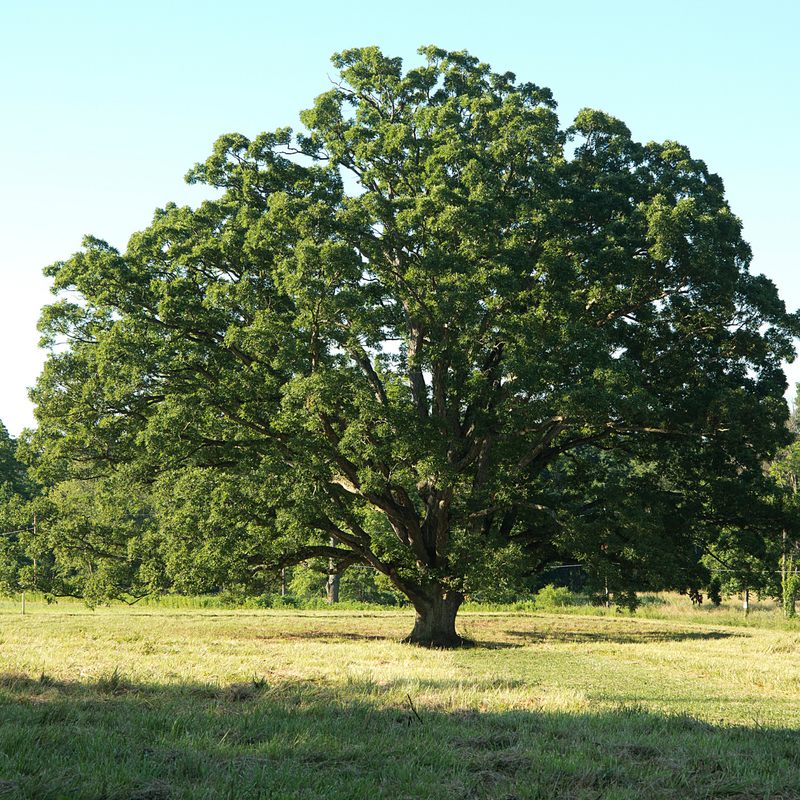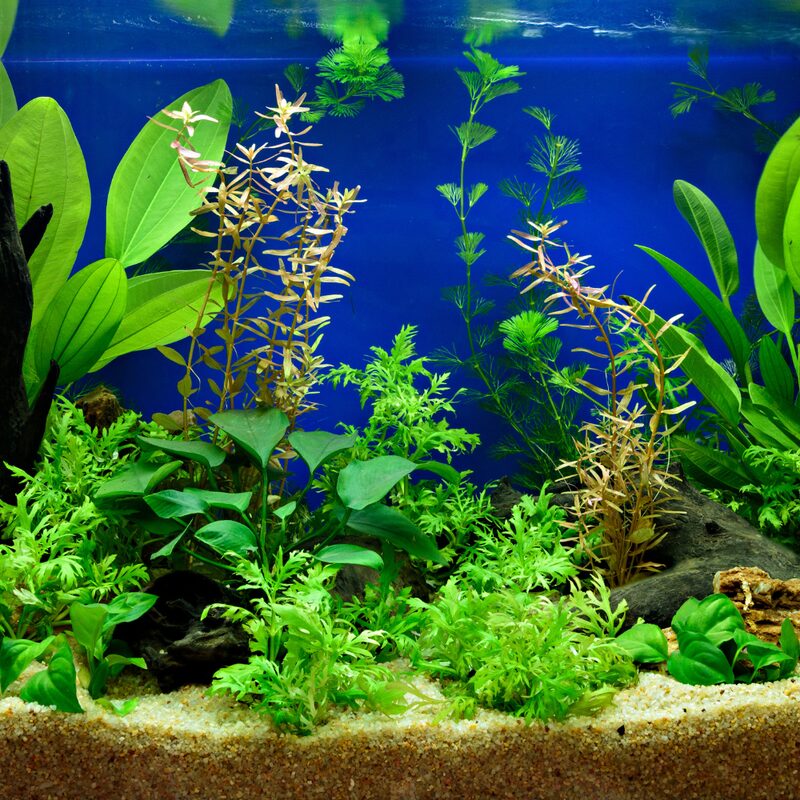-
×
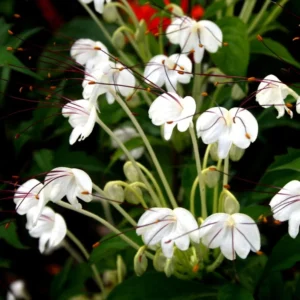 Variegated Lilyturf Grass Plant Live - Liriope Plant In 2.5 Inch Pot - Ornamental Grass Groundcover
$19.99
Variegated Lilyturf Grass Plant Live - Liriope Plant In 2.5 Inch Pot - Ornamental Grass Groundcover
$19.99 -
×
 3 Variegated Cuban Oregano Plants Live, Live Cuban Oregano Plant Indoor, 4 to 6 Inc Tall, Mexican Mint Plant, Spanish Thyme Plant Live, Well Rooted
$51.98
3 Variegated Cuban Oregano Plants Live, Live Cuban Oregano Plant Indoor, 4 to 6 Inc Tall, Mexican Mint Plant, Spanish Thyme Plant Live, Well Rooted
$51.98 -
×
 Red Fountain Grass Plant Live - Ornamental Grass Live Plant In 4 Inch Pot - Red Grass Clump
$22.99
Red Fountain Grass Plant Live - Ornamental Grass Live Plant In 4 Inch Pot - Red Grass Clump
$22.99 -
×
 Red Twig Dogwood Live Plant Shrub, Well Rooted, No Pot, 8-16 Inc Liners, No Leaf in Winter
$47.99
Red Twig Dogwood Live Plant Shrub, Well Rooted, No Pot, 8-16 Inc Liners, No Leaf in Winter
$47.99 -
×
 Ice Cream Banana Tree, Blue Java Banana, 4-6" Bareroot Live Plant - Vanilla Flavor Bananas - USDA Zones 8-11
$31.99
Ice Cream Banana Tree, Blue Java Banana, 4-6" Bareroot Live Plant - Vanilla Flavor Bananas - USDA Zones 8-11
$31.99 -
×
 Black Jaboticaba Tree Live Plant, 1-2 Feet Tall, Brazilian Grape Tree for Plantin, Live Jaboticaba Tree , Zones 9-11
$147.99
Black Jaboticaba Tree Live Plant, 1-2 Feet Tall, Brazilian Grape Tree for Plantin, Live Jaboticaba Tree , Zones 9-11
$147.99 -
×
 Culantro Seeds For Planting Outdoors, 200 Seeds, Culantro Herb Seeds, Culantro Plant Seeds
$8.49
Culantro Seeds For Planting Outdoors, 200 Seeds, Culantro Herb Seeds, Culantro Plant Seeds
$8.49 -
×
 25 Joshua Tree Seeds "Largest Yucca Plant" Cact Cacti Succulent Very Rare
$3.00
25 Joshua Tree Seeds "Largest Yucca Plant" Cact Cacti Succulent Very Rare
$3.00 -
×
 Black Blue Sage Salvia Live Plant Herb, Blue Salvia Sage Bush Shrub Grow Indoors Outdoor in 3" Pot
$25.99
Black Blue Sage Salvia Live Plant Herb, Blue Salvia Sage Bush Shrub Grow Indoors Outdoor in 3" Pot
$25.99 -
×
 Set of 8 Dwarf Mixed Color Dianthus Perennial for Outside Planting, Dianthus Flower Plants for Outdoor Planting, Virbant Color Mixed Dianthus Plants Live
$58.99
Set of 8 Dwarf Mixed Color Dianthus Perennial for Outside Planting, Dianthus Flower Plants for Outdoor Planting, Virbant Color Mixed Dianthus Plants Live
$58.99 -
×
 2 Adenium Desert Rose Plants, Mixed Desert Rose Plants, Succulents Plants Live From 3 To 5 Inches Height
$29.99
2 Adenium Desert Rose Plants, Mixed Desert Rose Plants, Succulents Plants Live From 3 To 5 Inches Height
$29.99 -
×
 Batch 3 Pawpaw Trees Live Plants, Common Pawpaw Tree, Asimina Triloba Tree, 1 Year Old Well Rooted Pawpaw Tree
$83.99
Batch 3 Pawpaw Trees Live Plants, Common Pawpaw Tree, Asimina Triloba Tree, 1 Year Old Well Rooted Pawpaw Tree
$83.99 -
×
 Red Chokecherry Tree - Live Plant, 8-14 Inch Tall, Chokecherry Plant in 2.5 Inch Pot, No Shipping to CA
$27.99
Red Chokecherry Tree - Live Plant, 8-14 Inch Tall, Chokecherry Plant in 2.5 Inch Pot, No Shipping to CA
$27.99 -
×
 20 Jack In The Pulpit Bulbs - For Growing Home Garden, Perennial Jack In The Pulpit Tubers
$49.99
20 Jack In The Pulpit Bulbs - For Growing Home Garden, Perennial Jack In The Pulpit Tubers
$49.99 -
×
 Red Twig Dogwood Shrub Live Plant, Bare Root, 8-16 Inc Liners, No Leaf in Winter
$45.99
Red Twig Dogwood Shrub Live Plant, Bare Root, 8-16 Inc Liners, No Leaf in Winter
$45.99 -
×
 Pineapple Sage Live Plant, Red Salvia Live Bush Plant, No Pot
$19.99
Pineapple Sage Live Plant, Red Salvia Live Bush Plant, No Pot
$19.99 -
×
 Set of 3 Liriope Muscari Plants Live, Lily Turf Ground Cover, 6 Inch Starter Plants for Landscaping
$24.99
Set of 3 Liriope Muscari Plants Live, Lily Turf Ground Cover, 6 Inch Starter Plants for Landscaping
$24.99 -
×
 10 Lily Of The Valley Bulbs, Lily Of The Valley Bulbs For Planting, Lily Of The Valley Bare Roots
$49.98
10 Lily Of The Valley Bulbs, Lily Of The Valley Bulbs For Planting, Lily Of The Valley Bare Roots
$49.98 -
×
 Calamondin Tree, Calamondin Orange Tree Indoors, Calamansi Live Plant, Calamansi Fruit Tree Large From 14 To 18 Inches Tall, Gallon Pot
$119.99
Calamondin Tree, Calamondin Orange Tree Indoors, Calamansi Live Plant, Calamansi Fruit Tree Large From 14 To 18 Inches Tall, Gallon Pot
$119.99 -
×
 2 Blue Sage Salvia Live Plants, Salvia Bushes in 4" Pot, Blue Purple Salvia Plants
$18.99
2 Blue Sage Salvia Live Plants, Salvia Bushes in 4" Pot, Blue Purple Salvia Plants
$18.99 -
×
 Live Muscadine Grape Vine – Hardy 8-12 Inch Tall Grape Plant for Home Gardening and Fruit Harvest
$29.99
Live Muscadine Grape Vine – Hardy 8-12 Inch Tall Grape Plant for Home Gardening and Fruit Harvest
$29.99 -
×
 4 Hot Carolina Reaper Pepper Plants, World Hottest Pepper Plants, 80 Days Old Well Rooted, Live Hot Pepper Plants, Pepper Seedlings for Planting
$36.99
4 Hot Carolina Reaper Pepper Plants, World Hottest Pepper Plants, 80 Days Old Well Rooted, Live Hot Pepper Plants, Pepper Seedlings for Planting
$36.99 -
×
 Ornamental Red Fountain Grass Live in 4 Inch Pot - Vibrant Red Grass Clump for Outdoors
$22.99
Ornamental Red Fountain Grass Live in 4 Inch Pot - Vibrant Red Grass Clump for Outdoors
$22.99 -
×
 5 Goldenseal Roots, Goldenseal Roots To Plants, Bare Roots Herbs Goldenseal Plants
$55.98
5 Goldenseal Roots, Goldenseal Roots To Plants, Bare Roots Herbs Goldenseal Plants
$55.98 -
×
 Mexican Petunias Live Plants, Mexican Petunias Live Plants Pink, Mexican Petunia Ruellia 8 Inch Tall, 6 Inch Pot
$25.99
Mexican Petunias Live Plants, Mexican Petunias Live Plants Pink, Mexican Petunia Ruellia 8 Inch Tall, 6 Inch Pot
$25.99 -
×
 4 Live Fern Plants, 4 To 6 Inches Tall, Autumn Fern Plants Live, Fern Live Plants For Growing
$29.99
4 Live Fern Plants, 4 To 6 Inches Tall, Autumn Fern Plants Live, Fern Live Plants For Growing
$29.99 -
×
 Desert Rose Plants Set - 2 Live Succulents, White, 3-6 Inches, Outdoor Garden
$37.50
Desert Rose Plants Set - 2 Live Succulents, White, 3-6 Inches, Outdoor Garden
$37.50 -
×
 Pineapple Mint Plants Live Indoors Outdoors, Fresh Herb Mint Plant, Mint Plant Seeds, Mint Plant Variegated Pineapple Mint, Pineapple Mint Live Plant
$22.99
Pineapple Mint Plants Live Indoors Outdoors, Fresh Herb Mint Plant, Mint Plant Seeds, Mint Plant Variegated Pineapple Mint, Pineapple Mint Live Plant
$22.99 -
×
 Lily of The Valley Roots - White Flower Bulbs - Indoor Outdoor Planting
$19.99
Lily of The Valley Roots - White Flower Bulbs - Indoor Outdoor Planting
$19.99 -
×
 ZZ Live Plant for Indoor, Zamioculcas Zamiifolia Tree Live Plant, 4'' Pot, Hardy House Plant Pot, ZZ Plant Live, ZZ Tree Plant
$39.66
ZZ Live Plant for Indoor, Zamioculcas Zamiifolia Tree Live Plant, 4'' Pot, Hardy House Plant Pot, ZZ Plant Live, ZZ Tree Plant
$39.66 -
×
 White Oakleaf Hydrangea Plant Bush Tree Live Shrub in Quart Pot, Well Rooted Plants
$29.99
White Oakleaf Hydrangea Plant Bush Tree Live Shrub in Quart Pot, Well Rooted Plants
$29.99 -
×
 10 Lily of the Valley Bulbs - Fragrant White Flowers - Live Roots for Shaded Areas
$23.99
10 Lily of the Valley Bulbs - Fragrant White Flowers - Live Roots for Shaded Areas
$23.99 -
×
 Black Jaboticaba Tree Plant Live - 3 Gallon Pot - Airlayered Jabuticaba Tropical Plant Outdoor Growing
$137.99
Black Jaboticaba Tree Plant Live - 3 Gallon Pot - Airlayered Jabuticaba Tropical Plant Outdoor Growing
$137.99 -
×
 Peach Tree Live Plant, Sweet Peach Tree, 3-4 Feet Tall in 3 Gallon Pot for Full Sun
$179.99
Peach Tree Live Plant, Sweet Peach Tree, 3-4 Feet Tall in 3 Gallon Pot for Full Sun
$179.99 -
×
 Pandan Plant Live, Live Pandan Plant Indoor, Pandan Leaves Plant Herb, Pandan Live Plant Indoor, 4 to 6 Inc Tall, Succullent Plant Live
$34.99
Pandan Plant Live, Live Pandan Plant Indoor, Pandan Leaves Plant Herb, Pandan Live Plant Indoor, 4 to 6 Inc Tall, Succullent Plant Live
$34.99 -
×
 String Of Frogs Live, String Of Frog Live Plant 4 Inch Pot, Succulent String Of Frogs Plant, Live Plant String Of Frogs
$34.99
String Of Frogs Live, String Of Frog Live Plant 4 Inch Pot, Succulent String Of Frogs Plant, Live Plant String Of Frogs
$34.99 -
×
 Grafted Meyer Lemon Tree Plant Live for Planting Garden, Meyer Lemon Trees Live Plants, 2 Feet Tall, 1 Gallon Pot, Easy to Plant, Can't Ship to CA
$119.89
Grafted Meyer Lemon Tree Plant Live for Planting Garden, Meyer Lemon Trees Live Plants, 2 Feet Tall, 1 Gallon Pot, Easy to Plant, Can't Ship to CA
$119.89 -
×
 2 Succulent Plectranthus Vick Tomentosa Live Plants, Come in 4 Inch Pot, Indoor Outdoor Plant
$33.99
2 Succulent Plectranthus Vick Tomentosa Live Plants, Come in 4 Inch Pot, Indoor Outdoor Plant
$33.99 -
×
 Ponkan Mandarin Tree -Mandarin Orange Live Tree 3 Feet Tall Including Pot Tall - No Ship To CA, HI, PR, GU, AK
$126.96
Ponkan Mandarin Tree -Mandarin Orange Live Tree 3 Feet Tall Including Pot Tall - No Ship To CA, HI, PR, GU, AK
$126.96 -
×
 Live Kalanchoe Pinnata Plant, 4-8 Inch Tall Succulent Plant Live in 4 Inch Pot, Mother of Thousands Plant
$19.99
Live Kalanchoe Pinnata Plant, 4-8 Inch Tall Succulent Plant Live in 4 Inch Pot, Mother of Thousands Plant
$19.99
Guide
The Ultimate Guide to Calamondin Care: Tips for Growing a Thriving Tree
Are your calamondin orange trees struggling to thrive? Maybe the leaves are turning yellow, or you’re not getting those juicy, tart fruits you were hoping for. Don’t worry—I’ve got you covered! Calamondin care isn’t complicated, but it does require some specific steps to ensure a healthy and productive tree. Whether you’re growing it indoors as a potted plant or outdoors in your backyard, this guide will walk you through everything you need to know.
Growing calamondin needs attention to detail. You’ll learn from the basics to advanced care techniques. With this guide, you’ll become a calamondin care expert. Enjoy the benefits of a thriving calamondin tree in your garden.
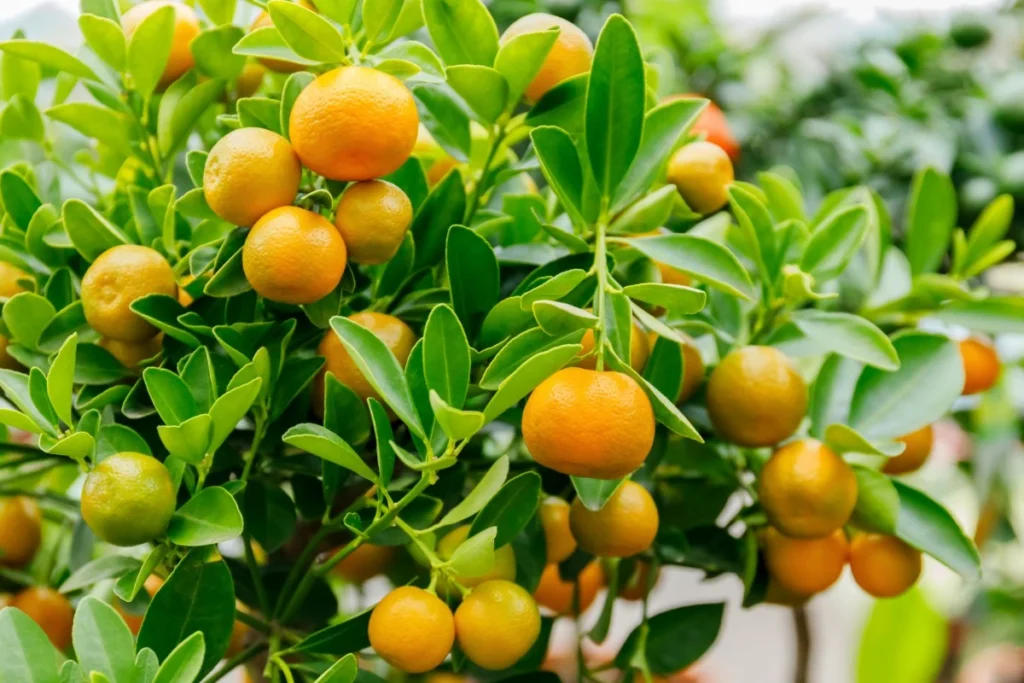
To get the most from your calamondin tree, understand citrus care and growing calamondin basics. Follow the tips and techniques in this guide. You’ll be on your way to growing a healthy and productive calamondin tree.
Key Takeaways
- Understand the basics of calamondin trees and citrus care
- Learn advanced care techniques for growing calamondin
- Discover the benefits of having a thriving calamondin tree in your garden
- Get tips on how to keep your calamondin tree healthy and productive
- Learn how to navigate the world of calamondin care with ease
What is a Calamondin Tree?
The calamondin (Citrus × microcarpa) is a hybrid citrus tree, often called calamansi or Philippine lime. It produces small, round fruits that look like miniature oranges but have a tart, lemon-lime flavor. It also has fragrant flowers and is easy to care for. With the right care, these trees can grow well in many places, making them great for home gardens.This makes them perfect for culinary uses like marinades, dressings, and drinks.
Native to Southeast Asia, calamondin trees are hardy, evergreen, and self-pollinating, making them an excellent choice for both indoor and outdoor gardening. They’re also a favorite among citrus lovers who don’t live in tropical climates because they can be grown in pots and brought indoors during winter.
Some of the key benefits of growing calamondin trees include:
- Compact size, making them perfect for small gardens or containers
- Fragrant flowers that attract pollinators and add beauty to the garden
- Delicious calamondin fruit that can be used in a variety of recipes
- Low-maintenance requirements, including tree maintenance and pest control
Calamondin trees are also very versatile. They can be used as decorative plants, hedges, or even for fresh calamondin fruit. Their unique qualities and benefits make them a favorite among gardeners and fruit lovers.
Ideal Growing Conditions for Your Calamondin Tree
To make sure your calamondin tree does well, it needs the right growing conditions. Calamondin tree care means knowing the best temperature, humidity, and light for citrus trees. They like temperatures between 65-75°F (18-24°C) and humidity of 50-60%.
Soil quality is also key for calamondin tree care. Citrus trees, like calamondin, need soil that drains well to avoid root rot. Mix peat moss, perlite, and vermiculite for a good soil blend. They also need enough water and nutrients to stay healthy.
Here are some important factors for the best growing conditions:
- Temperature: 65-75°F (18-24°C)
- Humidity: 50-60%
- Light: Full sun to partial shade
- Soil: Well-draining mix with peat moss, perlite, and vermiculite
- Water: Adequate and consistent
- Nutrients: Balanced fertilizer during growing season
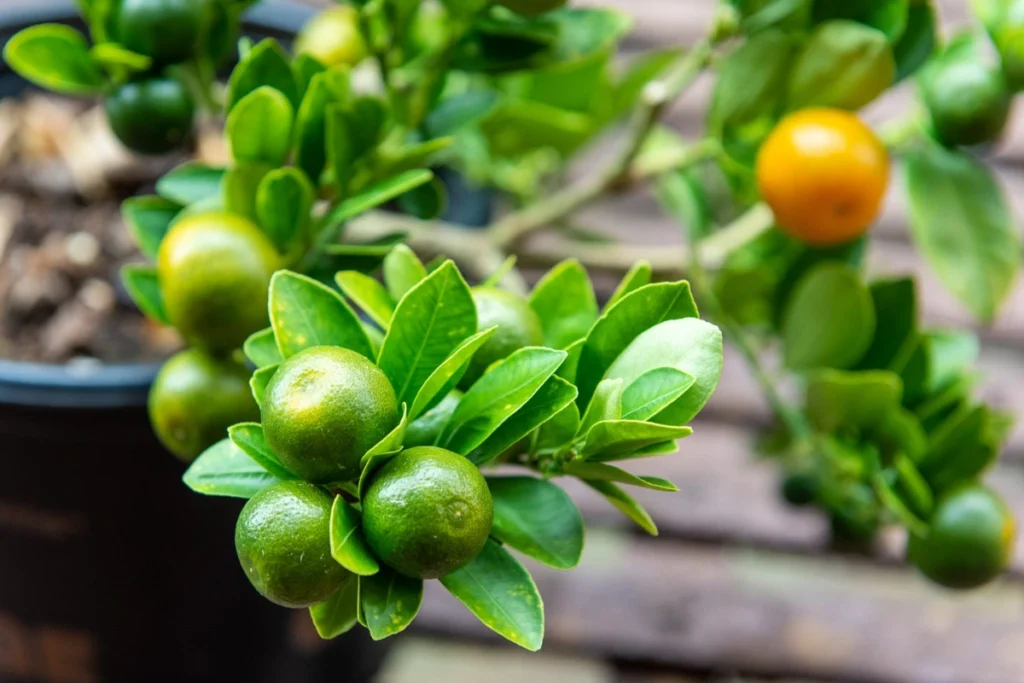
Essential Soil Requirements and Potting Guidelines
Understanding the soil needs is key for calamondin tree care. The right soil mix is vital for your tree’s health and growth. Calamondin trees need well-draining soil with a pH between 6.0 and 7.0. A good mix includes peat moss, vermiculite, and perlite for drainage and aeration.
Choosing the right pot is crucial. A pot that’s too small can cause waterlogged soil. A pot that’s too big can dry out the soil too fast. Look for a pot that’s at least 12-14 inches deep with drainage holes.
- Use a high-quality potting mix for citrus trees.
- Add compost or manure to improve soil fertility.
- Water carefully to avoid overwatering.
Watering Your Calamondin: Finding the Perfect Balance
Watering is key in tree care. It’s vital for the growth and fruit of citrus trees, like calamondin. You need to watch the soil moisture closely. Too much water can cause root rot, while too little can stress the tree.
For watering calamondin, the right amount and frequency vary. It depends on the climate, soil, and tree size. Calamondin trees like well-draining soil and should be watered deeply but not too often. Here are some tips to help you find the right balance:
- Check the soil moisture by inserting your finger into the soil up to the knuckle. If the soil feels dry, it’s time to water.
- Water your calamondin tree deeply, providing about 1-2 inches of water per week, either from rainfall or irrigation.
- Use mulch around the base of the tree to retain moisture, suppress weeds, and regulate soil temperature.
By following these tips and considering your tree’s needs, you can ensure it gets the right water. Proper tree care and watering will help your calamondin tree grow strong and healthy.
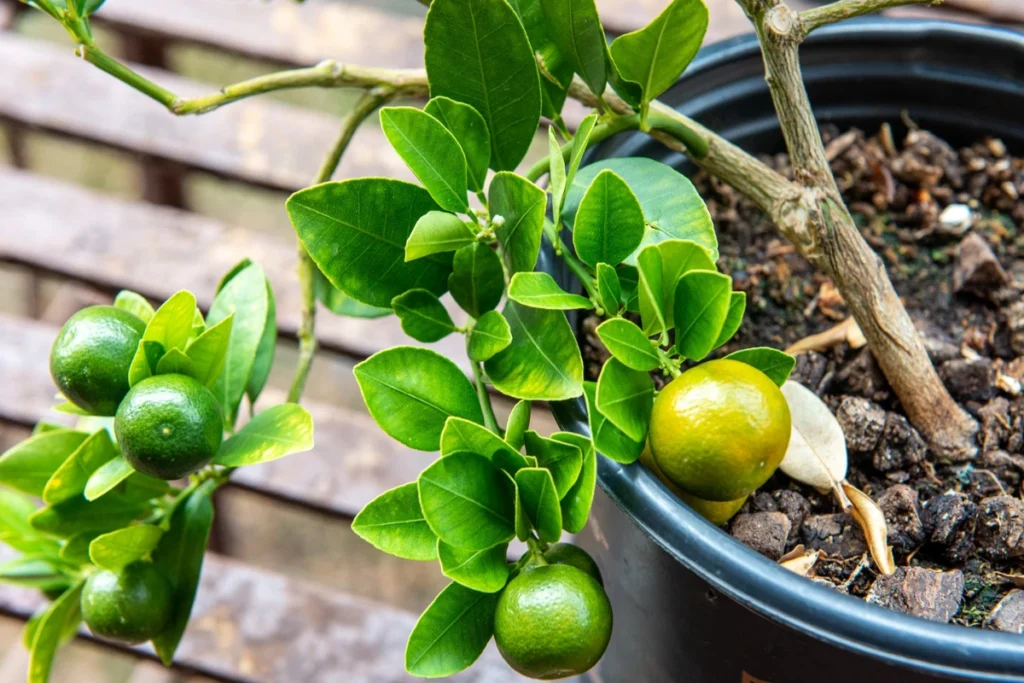
Light and Temperature Requirements
Understanding the light needs of a calamondin tree is key. They do well in bright, indirect light, which is great for indoor spots with lots of natural light. They can handle some direct sunlight, too, when outside. The goal is to balance light and temperature for the best growth.
Temperature control is also important. Calamondin trees like temperatures between 65-75°F (18-24°C). This makes them fit well in most homes. It’s important to keep them away from cold drafts and sudden temperature changes. This helps prevent stress to the tree. With the right light and temperature, your calamondin tree will flourish.
- Placing the tree near an east- or west-facing window for optimal light
- Avoiding temperatures below 55°F (13°C) or above 85°F (29°C)
- Using a thermometer to monitor temperature fluctuations
Fertilizing and Nutrient Management
Proper fertilizing is key for your calamondin tree’s health and fruit. Understanding nutrient management is vital for growth and fruit. Fertilizing needs a balanced approach, considering the tree’s needs and soil nutrients.
Choosing the right fertilizer is crucial. Organic options like compost or manure offer natural nutrients. Inorganic fertilizers give a concentrated dose. Always follow the recommended amount to avoid harming your tree.
Effective nutrient management means watching soil nutrients and adjusting fertilizing. Regular soil tests help check pH and nutrient levels. This way, you can fix any nutrient gaps and ensure your tree grows well.
Some key fertilizing tips for calamondin trees include:
- Use a balanced fertilizer with nitrogen, phosphorus, and potassium.
- Avoid overfertilizing to prevent harm to your tree.
- Check soil pH levels and adjust fertilizing as needed.
- Think about using organic fertilizers like compost or manure.
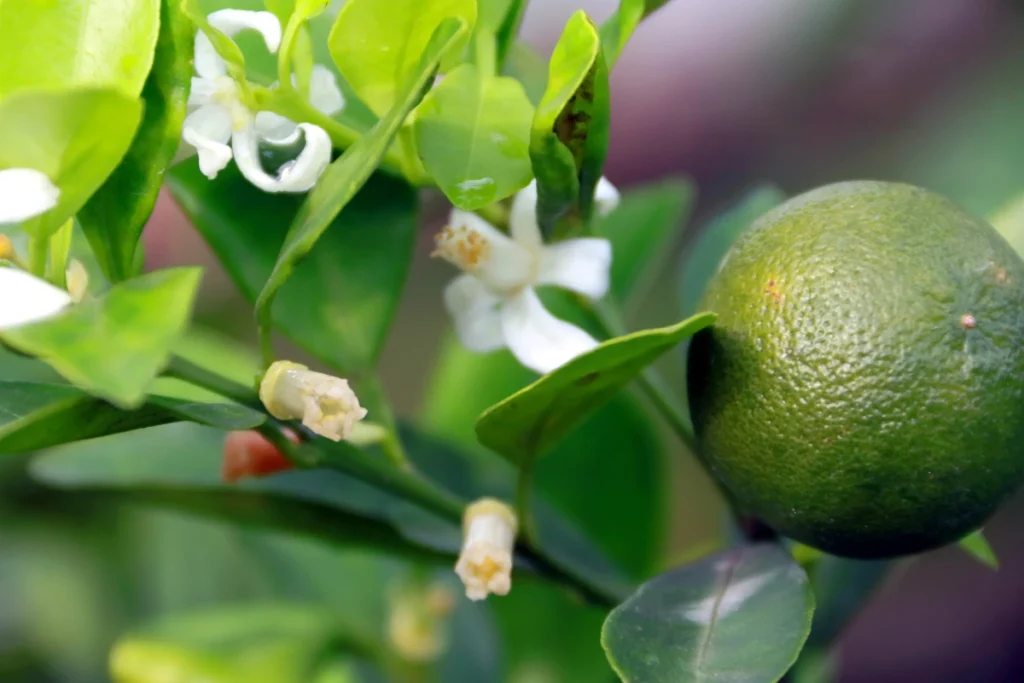
Pruning and Shaping Techniques
Pruning calamondin trees is key for their health and look. It keeps the tree small, promotes growth, and helps with fruiting. Using the right tools and methods is important to avoid harming the tree. Pruning shears, loppers, and saws are best for this job.
Shaping techniques are also crucial for the tree’s shape and growth. This includes pinching and thinning to control height and encourage branches. These methods help your calamondin tree grow into a beautiful, fruitful tree. Regular pruning and shaping keep your tree healthy and fruitful for years.
Knowing when to prune your calamondin tree is vital. Prune during the dormant season when the tree is not growing. This reduces stress and prevents disease. By following these tips and using the right techniques, your calamondin tree will stay healthy and productive.
Pest Control and Disease Prevention
Keeping your calamondin tree healthy is key. This means regular checks and care to stop pests and diseases. This way, your tree gets the best care it needs.
Watch out for pests like aphids, whiteflies, and spider mites. Use a mix of methods to control them. For example, introducing natural enemies or organic pesticides works well.
Preventing diseases is also crucial. Use cleaning, quarantine, and fungicides to keep your tree safe. Check your tree often for disease signs and act fast to stop it from spreading.
- Removing infected leaves or branches
- Disinfecting pruning tools
- Applying fungicides as needed
Harvesting and Utilizing Calamondin Fruits
When your calamondin tree grows, knowing how to harvest and use its fruits is key. The right harvesting calamondin methods help you get the most taste and health benefits. The best time to pick is when the fruits are yellow or yellow-orange and taste sweet but a bit sour.
To check if a fruit is ripe, gently squeeze it. A ripe calamondin will feel slightly soft but still firm. You can also taste a small, ripe fruit to see if it’s ready. For tree care, picking fruits often helps the tree keep producing and avoids it getting too full.
There are a few ways to harvest fruits, like picking them by hand, shaking the tree, or using tools like fruit pickers. After picking, put your calamondins in the fridge to keep them fresh for weeks. You can also freeze or dry them to keep them longer. This way, you can make jams, marmalades, or use them in baked goods.
Here are some tips for storing calamondin fruits:
- Store them in a cool, dry place to maintain freshness
- Keep them away from direct sunlight to prevent spoilage
- Use them within a few weeks of harvest for optimal flavor and nutrition
Seasonal Care and Maintenance Schedule
To keep your calamondin tree healthy, it needs seasonal care that fits its needs each time of year. A good maintenance schedule helps you stay on track. Knowing what your tree needs in each season is key.
In spring, focus on pruning and fertilizing to encourage new growth. Summer is for keeping up with watering and watching for pests. As fall comes, cut back on watering and protect your tree from harsh weather. In winter, shield it from frost and keep an eye out for pests.
- Pruning to maintain shape and promote healthy growth
- Fertilizing to provide essential nutrients
- Monitoring for pests and diseases
- Protecting your tree from extreme weather conditions
Growing a thriving calamondin tree needs careful attention and the right growing conditions. By using the techniques we’ve shared, you can overcome common challenges. This will help your calamondin tree reach its full potential.
Consistent care and maintenance are crucial for your tree’s health and fruit production. With proper soil, water, light, and nutrients, your calamondin will give you a rich harvest. It will also add beauty to your home garden.
Enjoy the process of growing a calamondin tree and taste the fresh, tangy flavors of your citrus fruits. By following this guide, you’ll be on your way to growing success. You’ll also enjoy the many benefits of this versatile and resilient plant.
FAQ
- What is the origin and characteristics of calamondin trees? Calamondin trees come from the Philippines. They are small, have sweet-smelling flowers, and tasty fruit.
- What are the benefits of growing calamondin trees? They are easy to care for and produce a lot of fruit. You can use them as decorations, hedges, or for eating.
- What are the ideal growing conditions for calamondin trees? They need well-draining soil, enough water, nutrients, and sunlight.
- What are the essential soil requirements and potting guidelines for calamondin trees? They need a soil mix that drains well and has the right pH and nutrients. You can grow them in pots, but make sure the pot drains well and is the right size.
- How do I properly water my calamondin tree? It’s important to water them right. Check the soil moisture, avoid too much water, and use mulch and drip irrigation to save water.
- What are the light and temperature requirements for calamondin trees? They need enough light indoors and outdoors. Keep their temperature in the best range to avoid extreme changes.
- How do I properly fertilize and manage the nutrients for my calamondin tree? Give them the right nutrients. Use the right fertilizer, follow the instructions, and check the soil to avoid too much or too little.
- What are the best pruning and shaping techniques for calamondin trees? Pruning and shaping keep them healthy and looking good. Use the right tools, prune at the right time, and shape them to get the look you want.
- How do I control pests and prevent diseases on my calamondin tree? To control pests and diseases, know what to look for, use different methods, and keep the area clean and isolated.
- When and how should I harvest and utilize calamondin fruits? Know when they’re ripe, harvest them correctly, and store them well to use them fully.
- What is the seasonal care and maintenance schedule for calamondin trees? Take care of them all year by pruning, fertilizing, and protecting them from bad weather. This keeps them healthy and productive.

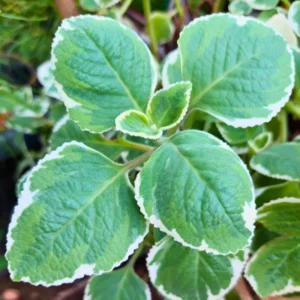 3 Variegated Cuban Oregano Plants Live, Live Cuban Oregano Plant Indoor, 4 to 6 Inc Tall, Mexican Mint Plant, Spanish Thyme Plant Live, Well Rooted
3 Variegated Cuban Oregano Plants Live, Live Cuban Oregano Plant Indoor, 4 to 6 Inc Tall, Mexican Mint Plant, Spanish Thyme Plant Live, Well Rooted 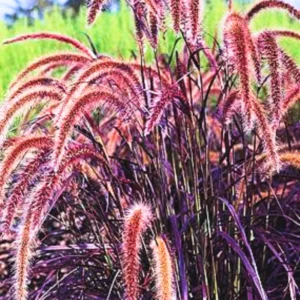 Red Fountain Grass Plant Live - Ornamental Grass Live Plant In 4 Inch Pot - Red Grass Clump
Red Fountain Grass Plant Live - Ornamental Grass Live Plant In 4 Inch Pot - Red Grass Clump 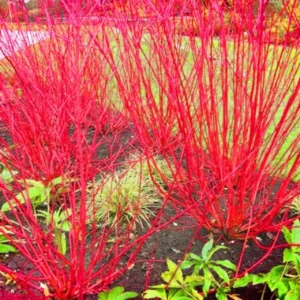 Red Twig Dogwood Live Plant Shrub, Well Rooted, No Pot, 8-16 Inc Liners, No Leaf in Winter
Red Twig Dogwood Live Plant Shrub, Well Rooted, No Pot, 8-16 Inc Liners, No Leaf in Winter 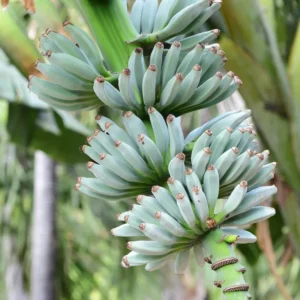 Ice Cream Banana Tree, Blue Java Banana, 4-6" Bareroot Live Plant - Vanilla Flavor Bananas - USDA Zones 8-11
Ice Cream Banana Tree, Blue Java Banana, 4-6" Bareroot Live Plant - Vanilla Flavor Bananas - USDA Zones 8-11 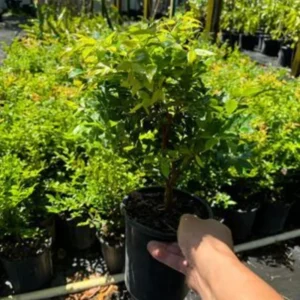 Black Jaboticaba Tree Live Plant, 1-2 Feet Tall, Brazilian Grape Tree for Plantin, Live Jaboticaba Tree , Zones 9-11
Black Jaboticaba Tree Live Plant, 1-2 Feet Tall, Brazilian Grape Tree for Plantin, Live Jaboticaba Tree , Zones 9-11  Culantro Seeds For Planting Outdoors, 200 Seeds, Culantro Herb Seeds, Culantro Plant Seeds
Culantro Seeds For Planting Outdoors, 200 Seeds, Culantro Herb Seeds, Culantro Plant Seeds 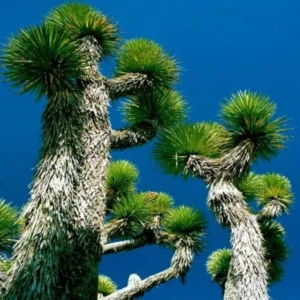 25 Joshua Tree Seeds "Largest Yucca Plant" Cact Cacti Succulent Very Rare
25 Joshua Tree Seeds "Largest Yucca Plant" Cact Cacti Succulent Very Rare 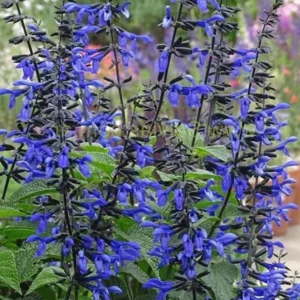 Black Blue Sage Salvia Live Plant Herb, Blue Salvia Sage Bush Shrub Grow Indoors Outdoor in 3" Pot
Black Blue Sage Salvia Live Plant Herb, Blue Salvia Sage Bush Shrub Grow Indoors Outdoor in 3" Pot  Set of 8 Dwarf Mixed Color Dianthus Perennial for Outside Planting, Dianthus Flower Plants for Outdoor Planting, Virbant Color Mixed Dianthus Plants Live
Set of 8 Dwarf Mixed Color Dianthus Perennial for Outside Planting, Dianthus Flower Plants for Outdoor Planting, Virbant Color Mixed Dianthus Plants Live 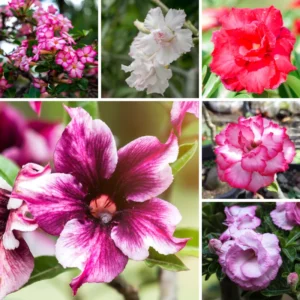 2 Adenium Desert Rose Plants, Mixed Desert Rose Plants, Succulents Plants Live From 3 To 5 Inches Height
2 Adenium Desert Rose Plants, Mixed Desert Rose Plants, Succulents Plants Live From 3 To 5 Inches Height 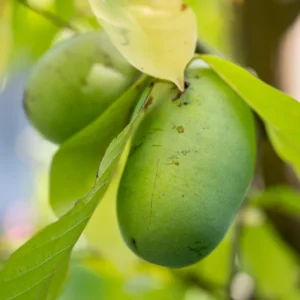 Batch 3 Pawpaw Trees Live Plants, Common Pawpaw Tree, Asimina Triloba Tree, 1 Year Old Well Rooted Pawpaw Tree
Batch 3 Pawpaw Trees Live Plants, Common Pawpaw Tree, Asimina Triloba Tree, 1 Year Old Well Rooted Pawpaw Tree 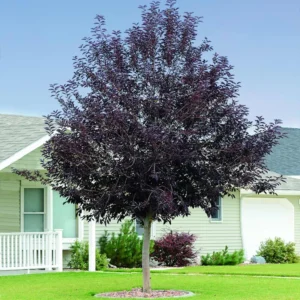 Red Chokecherry Tree - Live Plant, 8-14 Inch Tall, Chokecherry Plant in 2.5 Inch Pot, No Shipping to CA
Red Chokecherry Tree - Live Plant, 8-14 Inch Tall, Chokecherry Plant in 2.5 Inch Pot, No Shipping to CA 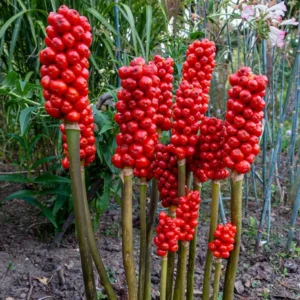 20 Jack In The Pulpit Bulbs - For Growing Home Garden, Perennial Jack In The Pulpit Tubers
20 Jack In The Pulpit Bulbs - For Growing Home Garden, Perennial Jack In The Pulpit Tubers  Red Twig Dogwood Shrub Live Plant, Bare Root, 8-16 Inc Liners, No Leaf in Winter
Red Twig Dogwood Shrub Live Plant, Bare Root, 8-16 Inc Liners, No Leaf in Winter 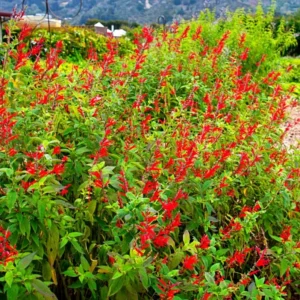 Pineapple Sage Live Plant, Red Salvia Live Bush Plant, No Pot
Pineapple Sage Live Plant, Red Salvia Live Bush Plant, No Pot 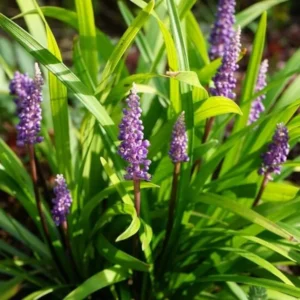 Set of 3 Liriope Muscari Plants Live, Lily Turf Ground Cover, 6 Inch Starter Plants for Landscaping
Set of 3 Liriope Muscari Plants Live, Lily Turf Ground Cover, 6 Inch Starter Plants for Landscaping 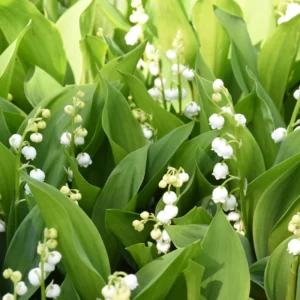 10 Lily Of The Valley Bulbs, Lily Of The Valley Bulbs For Planting, Lily Of The Valley Bare Roots
10 Lily Of The Valley Bulbs, Lily Of The Valley Bulbs For Planting, Lily Of The Valley Bare Roots 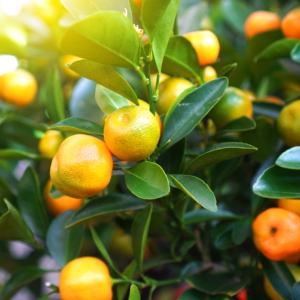 Calamondin Tree, Calamondin Orange Tree Indoors, Calamansi Live Plant, Calamansi Fruit Tree Large From 14 To 18 Inches Tall, Gallon Pot
Calamondin Tree, Calamondin Orange Tree Indoors, Calamansi Live Plant, Calamansi Fruit Tree Large From 14 To 18 Inches Tall, Gallon Pot 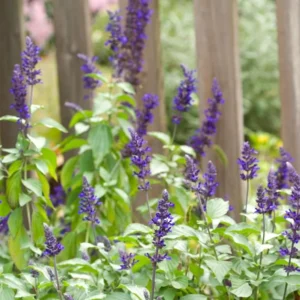 2 Blue Sage Salvia Live Plants, Salvia Bushes in 4" Pot, Blue Purple Salvia Plants
2 Blue Sage Salvia Live Plants, Salvia Bushes in 4" Pot, Blue Purple Salvia Plants 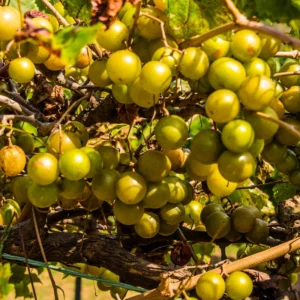 Live Muscadine Grape Vine – Hardy 8-12 Inch Tall Grape Plant for Home Gardening and Fruit Harvest
Live Muscadine Grape Vine – Hardy 8-12 Inch Tall Grape Plant for Home Gardening and Fruit Harvest 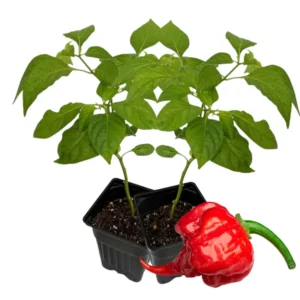 4 Hot Carolina Reaper Pepper Plants, World Hottest Pepper Plants, 80 Days Old Well Rooted, Live Hot Pepper Plants, Pepper Seedlings for Planting
4 Hot Carolina Reaper Pepper Plants, World Hottest Pepper Plants, 80 Days Old Well Rooted, Live Hot Pepper Plants, Pepper Seedlings for Planting 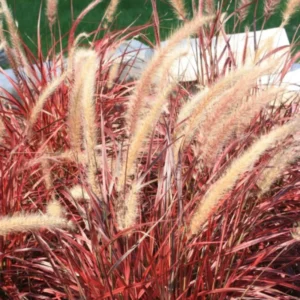 Ornamental Red Fountain Grass Live in 4 Inch Pot - Vibrant Red Grass Clump for Outdoors
Ornamental Red Fountain Grass Live in 4 Inch Pot - Vibrant Red Grass Clump for Outdoors 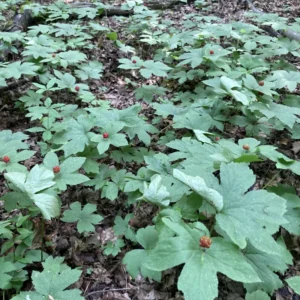 5 Goldenseal Roots, Goldenseal Roots To Plants, Bare Roots Herbs Goldenseal Plants
5 Goldenseal Roots, Goldenseal Roots To Plants, Bare Roots Herbs Goldenseal Plants 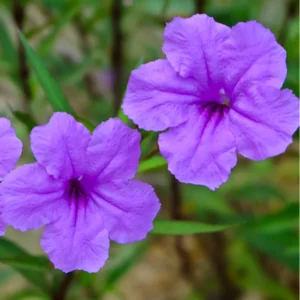 Mexican Petunias Live Plants, Mexican Petunias Live Plants Pink, Mexican Petunia Ruellia 8 Inch Tall, 6 Inch Pot
Mexican Petunias Live Plants, Mexican Petunias Live Plants Pink, Mexican Petunia Ruellia 8 Inch Tall, 6 Inch Pot 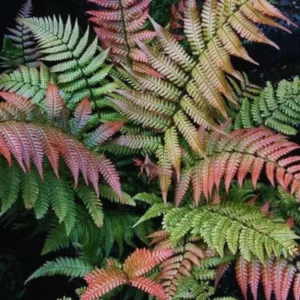 4 Live Fern Plants, 4 To 6 Inches Tall, Autumn Fern Plants Live, Fern Live Plants For Growing
4 Live Fern Plants, 4 To 6 Inches Tall, Autumn Fern Plants Live, Fern Live Plants For Growing 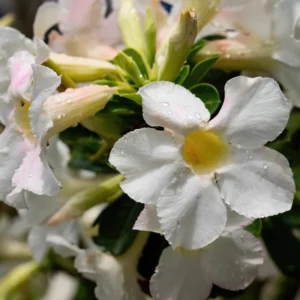 Desert Rose Plants Set - 2 Live Succulents, White, 3-6 Inches, Outdoor Garden
Desert Rose Plants Set - 2 Live Succulents, White, 3-6 Inches, Outdoor Garden 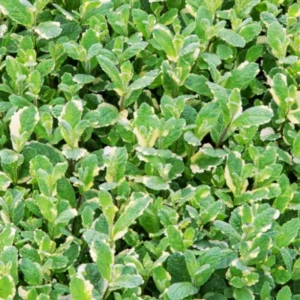 Pineapple Mint Plants Live Indoors Outdoors, Fresh Herb Mint Plant, Mint Plant Seeds, Mint Plant Variegated Pineapple Mint, Pineapple Mint Live Plant
Pineapple Mint Plants Live Indoors Outdoors, Fresh Herb Mint Plant, Mint Plant Seeds, Mint Plant Variegated Pineapple Mint, Pineapple Mint Live Plant 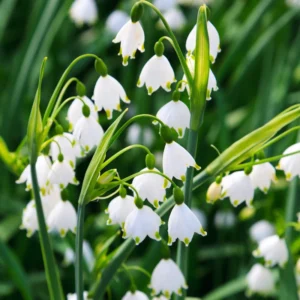 Lily of The Valley Roots - White Flower Bulbs - Indoor Outdoor Planting
Lily of The Valley Roots - White Flower Bulbs - Indoor Outdoor Planting  ZZ Live Plant for Indoor, Zamioculcas Zamiifolia Tree Live Plant, 4'' Pot, Hardy House Plant Pot, ZZ Plant Live, ZZ Tree Plant
ZZ Live Plant for Indoor, Zamioculcas Zamiifolia Tree Live Plant, 4'' Pot, Hardy House Plant Pot, ZZ Plant Live, ZZ Tree Plant 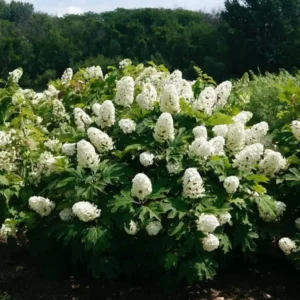 White Oakleaf Hydrangea Plant Bush Tree Live Shrub in Quart Pot, Well Rooted Plants
White Oakleaf Hydrangea Plant Bush Tree Live Shrub in Quart Pot, Well Rooted Plants 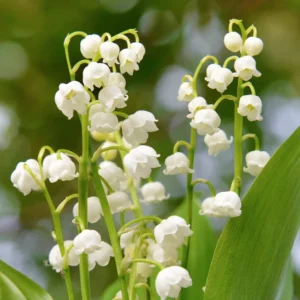 10 Lily of the Valley Bulbs - Fragrant White Flowers - Live Roots for Shaded Areas
10 Lily of the Valley Bulbs - Fragrant White Flowers - Live Roots for Shaded Areas 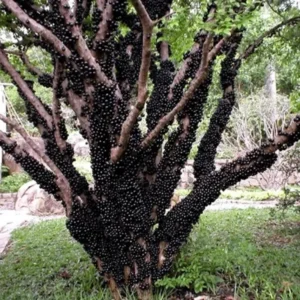 Black Jaboticaba Tree Plant Live - 3 Gallon Pot - Airlayered Jabuticaba Tropical Plant Outdoor Growing
Black Jaboticaba Tree Plant Live - 3 Gallon Pot - Airlayered Jabuticaba Tropical Plant Outdoor Growing 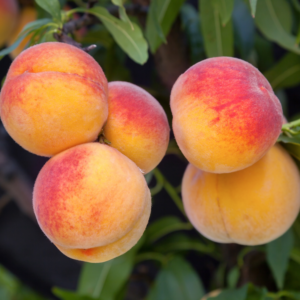 Peach Tree Live Plant, Sweet Peach Tree, 3-4 Feet Tall in 3 Gallon Pot for Full Sun
Peach Tree Live Plant, Sweet Peach Tree, 3-4 Feet Tall in 3 Gallon Pot for Full Sun 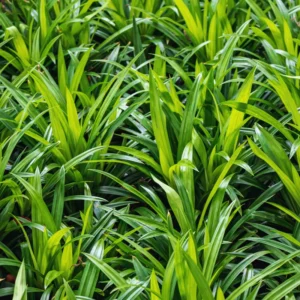 Pandan Plant Live, Live Pandan Plant Indoor, Pandan Leaves Plant Herb, Pandan Live Plant Indoor, 4 to 6 Inc Tall, Succullent Plant Live
Pandan Plant Live, Live Pandan Plant Indoor, Pandan Leaves Plant Herb, Pandan Live Plant Indoor, 4 to 6 Inc Tall, Succullent Plant Live  String Of Frogs Live, String Of Frog Live Plant 4 Inch Pot, Succulent String Of Frogs Plant, Live Plant String Of Frogs
String Of Frogs Live, String Of Frog Live Plant 4 Inch Pot, Succulent String Of Frogs Plant, Live Plant String Of Frogs 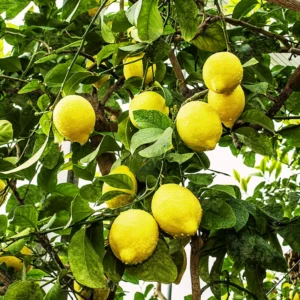 Grafted Meyer Lemon Tree Plant Live for Planting Garden, Meyer Lemon Trees Live Plants, 2 Feet Tall, 1 Gallon Pot, Easy to Plant, Can't Ship to CA
Grafted Meyer Lemon Tree Plant Live for Planting Garden, Meyer Lemon Trees Live Plants, 2 Feet Tall, 1 Gallon Pot, Easy to Plant, Can't Ship to CA 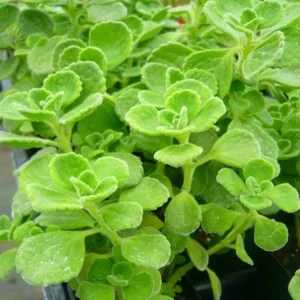 2 Succulent Plectranthus Vick Tomentosa Live Plants, Come in 4 Inch Pot, Indoor Outdoor Plant
2 Succulent Plectranthus Vick Tomentosa Live Plants, Come in 4 Inch Pot, Indoor Outdoor Plant  Ponkan Mandarin Tree -Mandarin Orange Live Tree 3 Feet Tall Including Pot Tall - No Ship To CA, HI, PR, GU, AK
Ponkan Mandarin Tree -Mandarin Orange Live Tree 3 Feet Tall Including Pot Tall - No Ship To CA, HI, PR, GU, AK 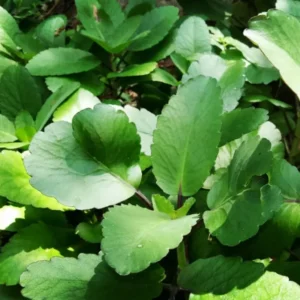 Live Kalanchoe Pinnata Plant, 4-8 Inch Tall Succulent Plant Live in 4 Inch Pot, Mother of Thousands Plant
Live Kalanchoe Pinnata Plant, 4-8 Inch Tall Succulent Plant Live in 4 Inch Pot, Mother of Thousands Plant 
